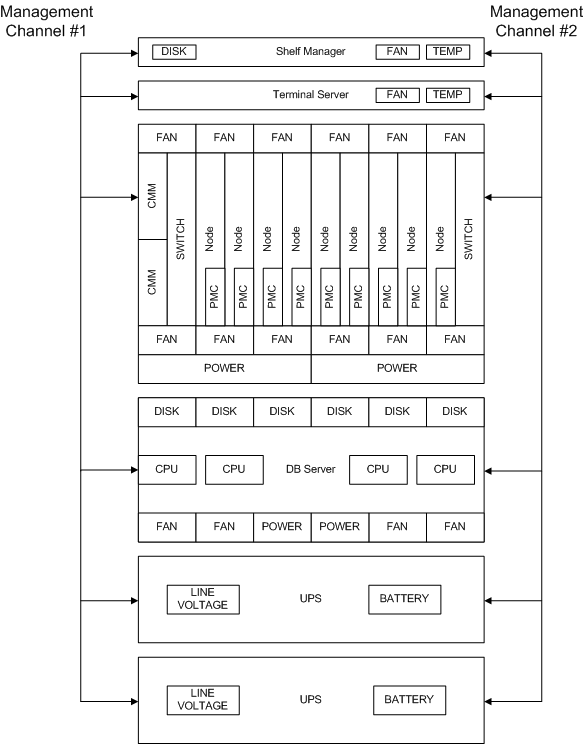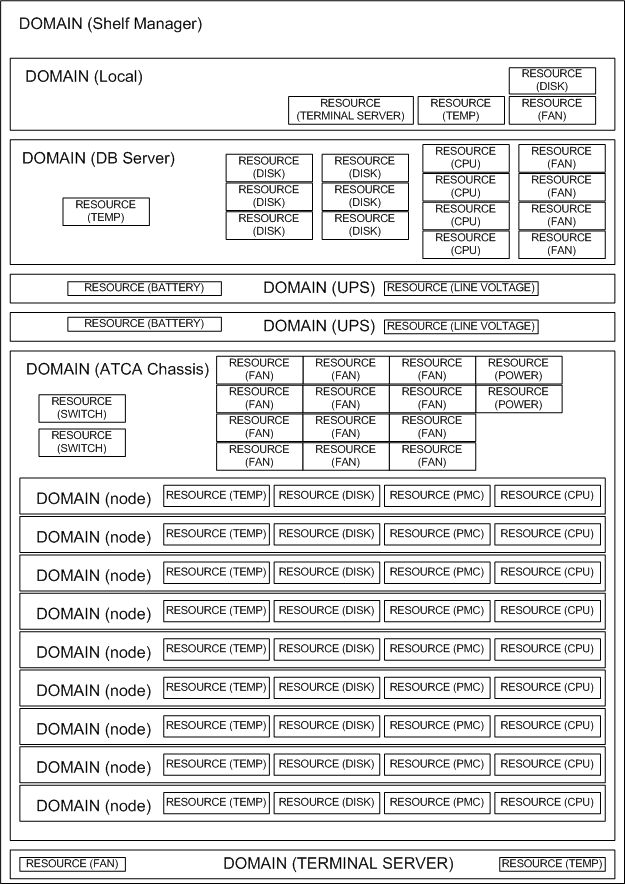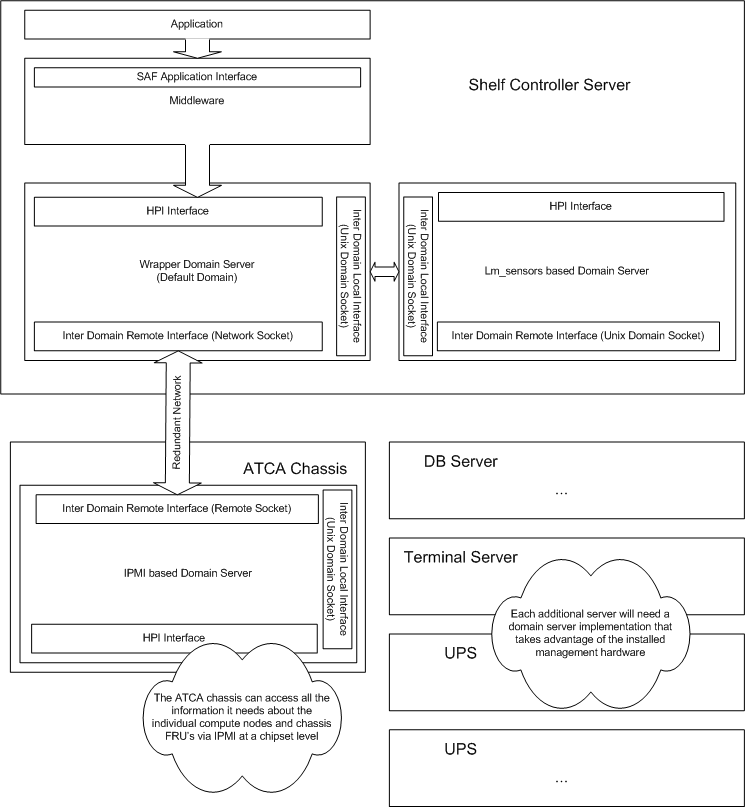| OpenHPI Manual | ||
|---|---|---|
| Prev | ||
Appendix A. Appendix A: Design Description Techniques
A.1. Usage Scenarios
The scope of the SA-Forum's HPI Specification could be interpreted as dealing with only local resources to a platform (where platforms are traditional rack mounted servers or chassis containing many bladed computer systems on a common management bus), or as a network of computer systems. The following usage scenario represents the view of a an OpenHPI implementation that spans across multiple computer systems.
The following scenario is presented to spawn design discussions for OpenHPI and help flush out some of the more vague portions of the HPI specification (like remoting capabilities.)
For this scenario, a rack of computers is closely coupled together to provide a single service in the same way that a single telecommunication application would span across multiple platforms all configured for that one application.
The rack consists of:
-
shelf manager: platform hosting middle-ware that uses OpenHPI to get a platform view of the entire rack of computers
-
terminal server: common terminal server to aid advanced trouble shooting of a given node
-
ATCA Chassis: Bladed server chassis full of single board computers and other FRU's all connected together via a common IPMI management bus
-
DB Server: Traditional database server as is seen in data centers
-
UPS: A couple of UPS units providing redundant power

As mentioned before, the full rack of computers is tightly coupled together to perform a single service, so from the services view this entire setup is a single platform. Assuming OpenHPI contains the ability to remotely plug physically separate computer systems into a single tree as described in the HPI specification, our scenario is configured to see the following HPI view:

One possible high level design for enabling such a remotely pluggable capabilities could be done like:

In the above diagram, the software components that understands specific hardware management components (like IPMI) would be isolated into "domain servers". In addition to this a remote and local mechanism would be provided for domain servers to be plugged into each other, resulting in the HPI tree needed for the specific solution.